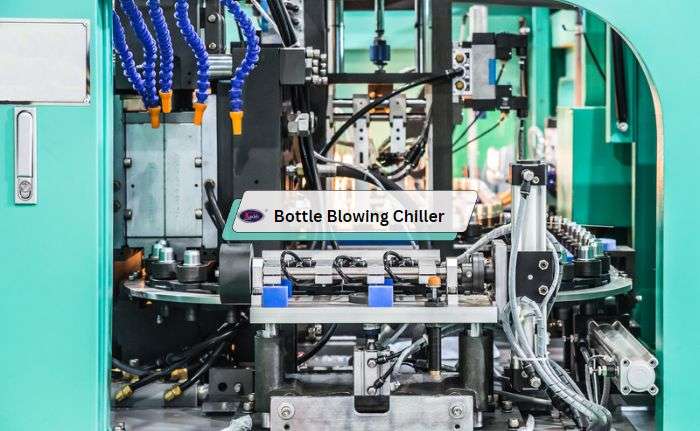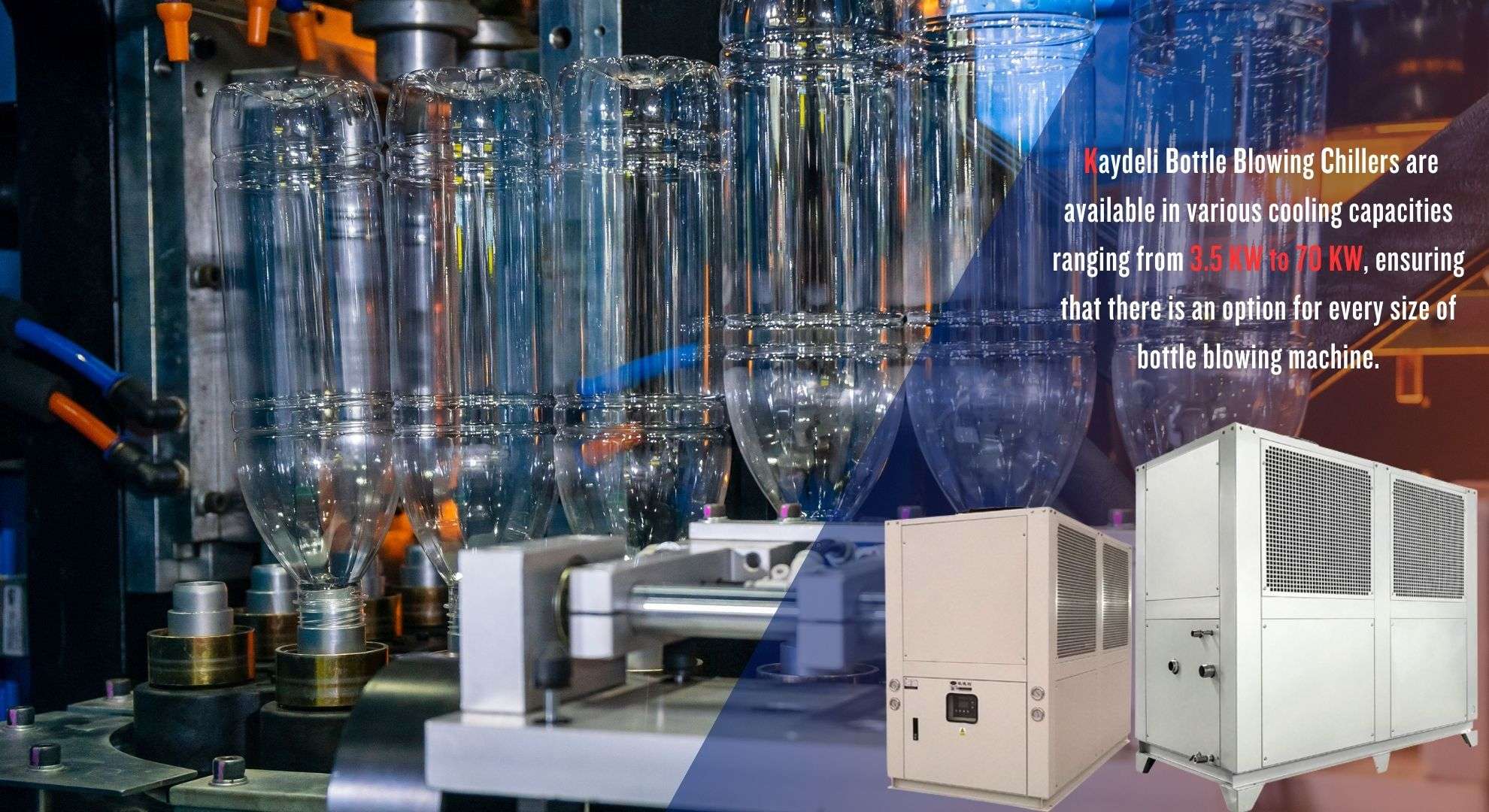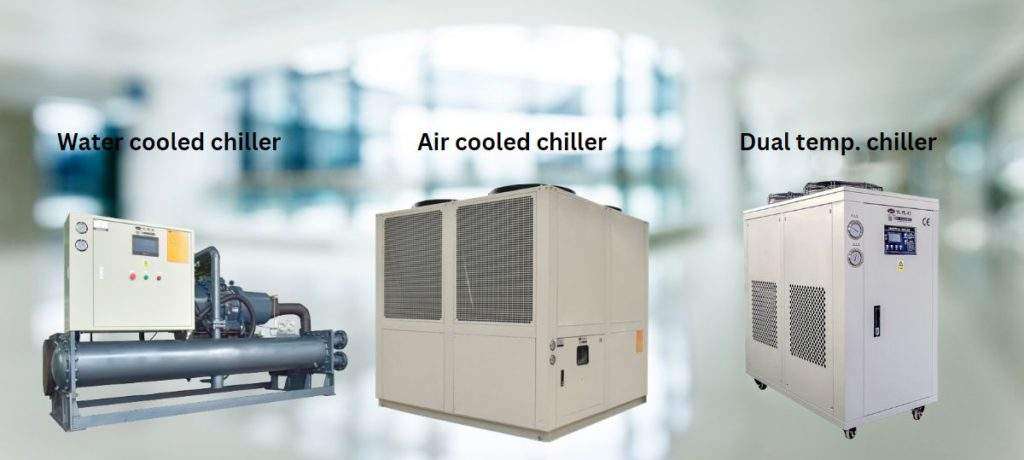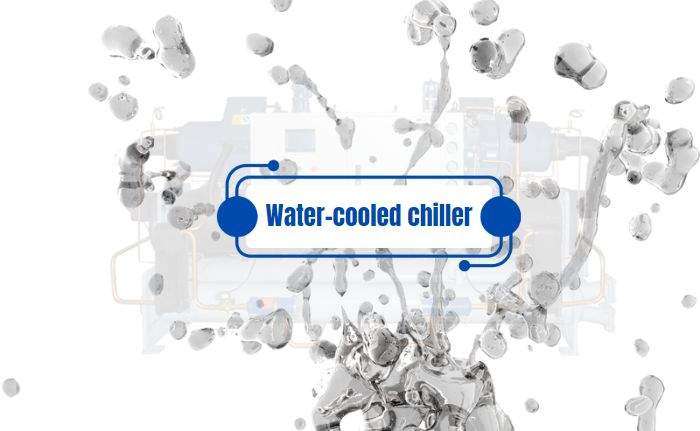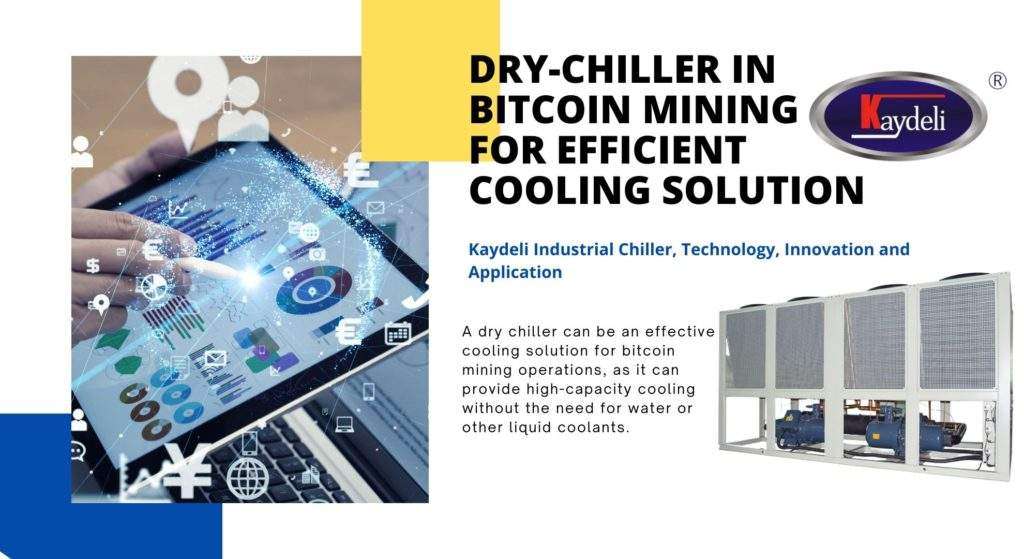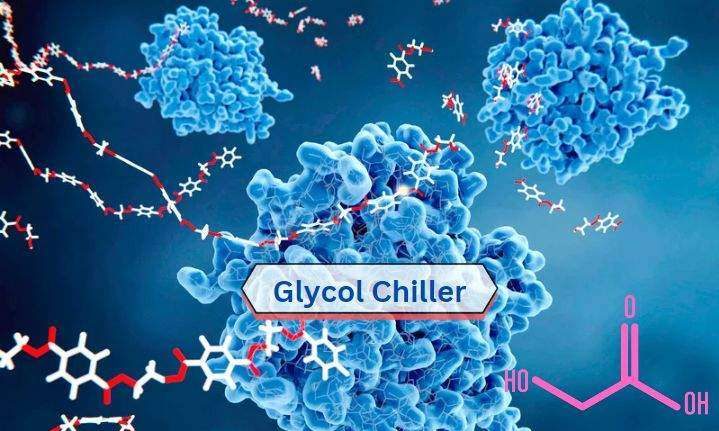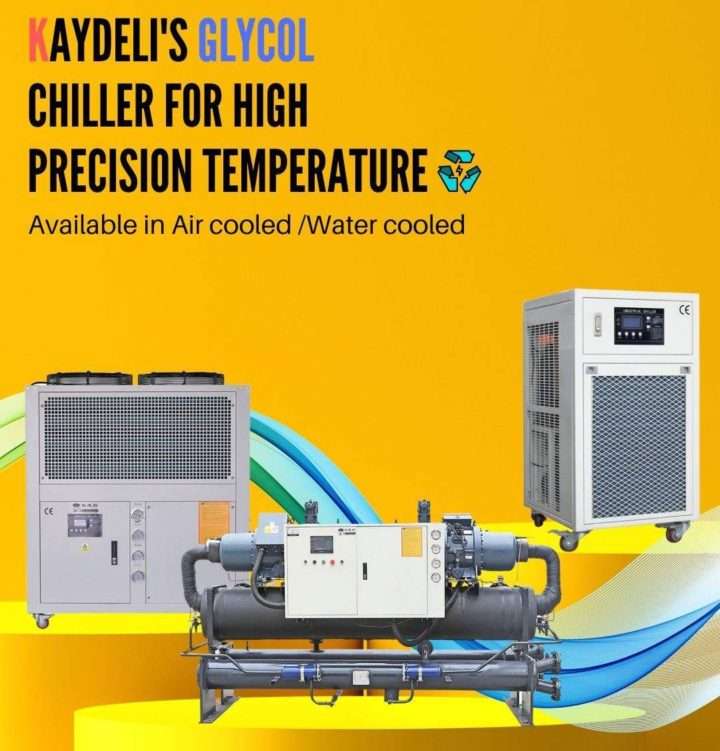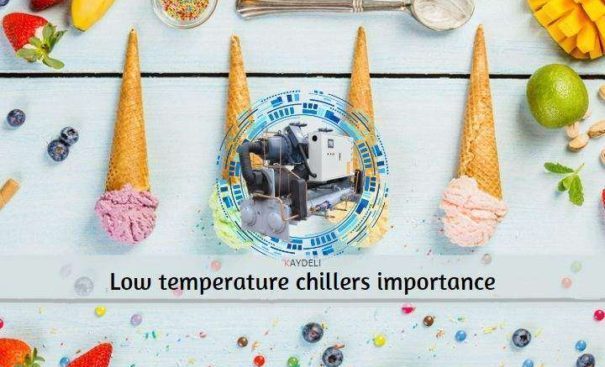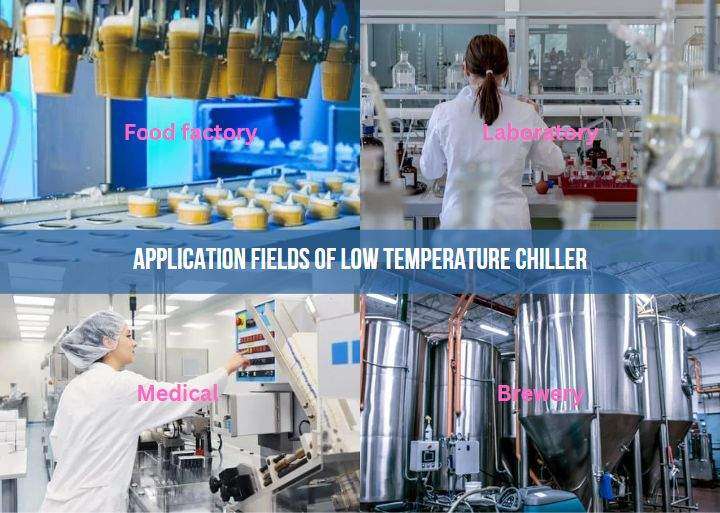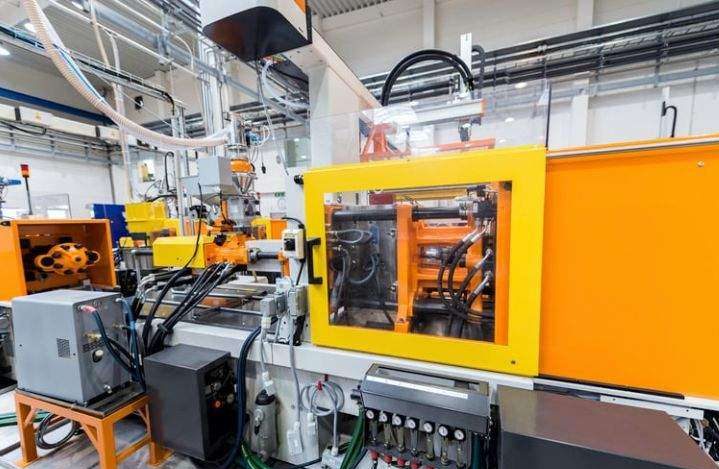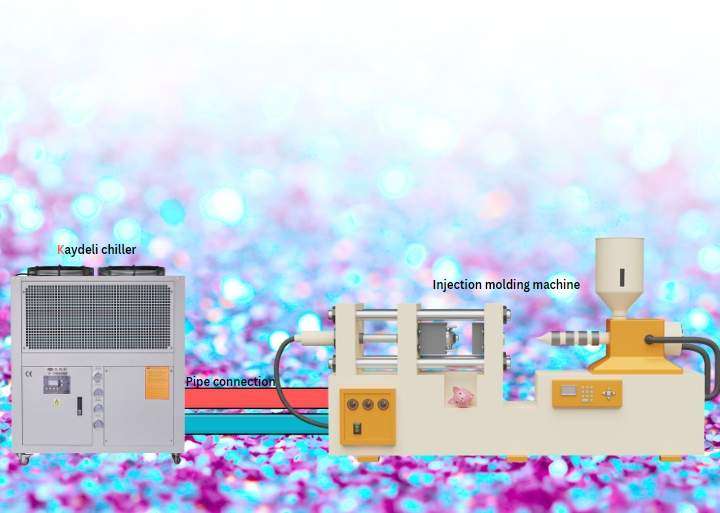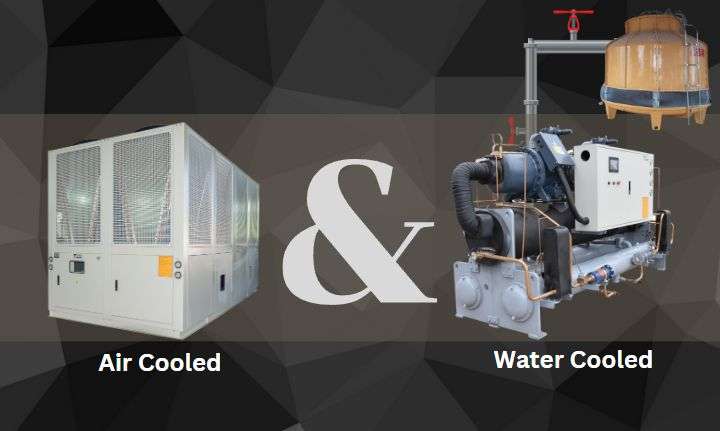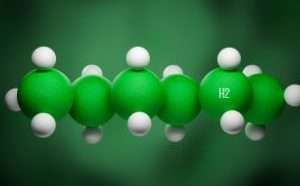Enhance Your Bottle Blowing Process with Kaydeli Chiller
Bottle blowing is a manufacturing process used in the production of plastic bottles, where preforms or molds of plastic are heated and blown into the desired shape of the final product. The success of the bottle-blowing process depends on several factors, one of which is temperature control. To ensure consistent quality and efficiency in the bottle-blowing process, it is essential to have a reliable cooling system that can regulate the temperature of the plastic preforms.
Kaydeli is a leading manufacturer of industrial chillers, including those used in the bottle-blowing process. In this article, we will explore the features and benefits of Kaydeli bottle-blowing chillers.
Features of Kaydeli Bottle Blowing Chillers Kaydeli Bottle Blowing Chillers are designed to provide precise temperature control, reliability, and energy efficiency to the bottle-blowing process. Some of the key features of Kaydeli chillers include:
High Cooling Capacity: Kaydeli Bottle Blowing Chillers are available in various cooling capacities ranging from 3.5 KW to 70 KW, ensuring that there is an option for every size of the bottle-blowing machine.
Energy Efficiency: Kaydeli Bottle Blowing Chillers are equipped with world-famous efficient compressors like Danfoss, and Panasonic that help to reduce energy consumption and operating costs.
High-Quality Components: Kaydeli Bottle Blowing Chillers are built with high-quality components, such as compressors, evaporators, and condensers, that are designed for durability and reliability.
Precise Temperature Control: Kaydeli Bottle Blowing Chillers are equipped with microprocessor-based controllers that provide precise temperature control within +/- 0.5°C~1°C, ensuring consistent product quality.
User-Friendly Design: Kaydeli Bottle Blowing Chillers are designed with ease of use in mind, with features such as LCD displays, fault alarms, and remote control options for convenient operation and monitoring.
Benefits of Kaydeli Bottle Blowing Chillers The use of Kaydeli Bottle Blowing Chillers in the bottle-blowing process provides several benefits, including:
Improved Product Quality: The precise temperature control provided by Kaydeli Bottle Blowing Chillers ensures consistent product quality, resulting in better-looking, higher-quality bottles.
Increased Efficiency: Kaydeli Bottle Blowing Chillers can help to increase efficiency in the bottle-blowing process by reducing the cooling time required and increasing the number of bottles that can be produced in a given amount of time.
Cost Savings: Kaydeli Bottle Blowing Chillers are designed to be energy efficient, which can lead to cost savings in operating expenses over time.
Increased Equipment Lifespan: The use of Kaydeli Bottle Blowing Chillers can help to extend the lifespan of bottle-blowing machines by reducing the amount of wear and tear on the equipment.
Easy Maintenance: Kaydeli Bottle Blowing Chillers are designed for easy maintenance, with features such as removable filters and easy access to components for quick repairs.
Conclusion: Kaydeli Bottle Blowing Chillers are an excellent choice for any manufacturer looking to improve the quality and efficiency of their bottle-blowing process. With their high cooling capacity, energy efficiency, and precise temperature control, Kaydeli chillers can help to increase productivity, reduce operating costs, and improve the overall quality of the final product. Additionally, their user-friendly design and easy maintenance make them a convenient and reliable option for any bottle-blowing operation. If you are looking for any kinds of chillers for your project please, don’t hesitate to contact us.
Keep Your Pool and Spa Cool with Kaydeli Chillers
Swimming pools and spas are a great way to relax and enjoy the outdoors, especially during the warmer months of the year. However, as the temperature rises, so does the temperature of the water, making it less comfortable to swim or soak in. This is where the swimming pool and spa chillers come in.
A swimming pool and spa chiller is a type of chiller that is designed to cool the water in your pool and spa to a comfortable temperature. These chillers work by circulating the water through a heat exchanger, which is cooled by either air or water. The cooled water is then returned to the pool and spa, lowering the temperature of the water.
There are different types of swimming pool and spa chillers available, including air-cooled chillers, water-cooled chillers, and dual-temperature chillers.
Here are some more details about the types of chillers and which one may be best for your needs:
Air-cooled chillers:
Air-cooled chillers are the most common type of chiller for swimming pools and spas. They work by using a fan to blow air across a heat exchanger, which cools the water. These chillers are more affordable and easier to install than water-cooled chillers, but they are also less efficient and may not be suitable for larger pools or spas.
Water-cooled chillers:
Water-cooled chillers use a water source, such as a nearby lake or pond, to cool the water. These chillers are more efficient than air-cooled chillers, making them ideal for larger pools or spas. However, they are also more expensive to install and require access to a water source like a water tower.
Dual-temperature chillers:
Dual-temperature chillers are designed to cool the pool and spa simultaneously. They are ideal for those who have both and want to maintain different water temperatures for each. These chillers are a bit more expensive than single-temperature chillers as they require a heating device and some more equipment, but they offer the convenience of cooling both the pool and spa at the same time.
Low-temperature chillers:
Low-temperature chillers are designed to cool water to temperatures below 60°F (15.5°C) and are ideal for those who have ice rinks or other applications that require very cold water. These chillers are more expensive and require special considerations, such as a glycol solution to prevent freezing.
When choosing a chiller, it’s essential to consider the size of your pool or spa, your budget, and your specific needs. An air-cooled chiller may be the best choice if you have a small residential pool or spa. If you have a larger commercial pool or spa, a water-cooled chiller may be more efficient. If you have both a pool and spa and want to cool both, a dual-temperature chiller may be the best option.
Kaydeli is an industrial chiller manufacturing company that specializes in producing high-quality chillers for various applications, including swimming pools and spas. They offer a wide range of chillers, including air-cooled, water-cooled, and dual-temperature chillers, to suit your specific needs.
Kaydeli’s chillers are made from high-quality materials and are designed to be energy-efficient, durable, and easy to maintain. They offer a variety of features, such as digital temperature control, automatic shut-off, and quiet operation, to make using their chillers convenient and hassle-free.
Whether you have a small residential pool or a large commercial spa, Kaydeli can help you find the right chiller for your needs. Our team of experts can help you choose the right chiller based on the size of your pool or spa, your budget, and your specific requirements.
In conclusion, swimming pool and spa chillers are an essential investment for anyone who wants to enjoy their pool or spa throughout the year, regardless of the temperature.
Kaydeli is an industrial chiller manufacturing company that offers a wide range of chillers, including air-cooled, water-cooled, and dual-temperature chillers, to help you keep your pool and spa at a comfortable temperature.
Contact Kaydeli today to find the right chiller for your needs.
Why water cooled chillers are important?
Water-cooled chillers play a critical role in the cooling industry, providing precise and efficient cooling for a wide range of industrial applications. These systems use water as a coolant to remove heat from processes and equipment, making them an ideal choice for large-scale cooling needs.
One of the key benefits of water-cooled chillers is their energy efficiency. Compared to air-cooled chillers, water-cooled systems use water as a more efficient heat transfer medium, resulting in lower energy consumption and reduced operating costs.
This makes them a cost-effective solution for cooling large industrial processes, such as data centers, manufacturing plants, and hospitals.
Another benefit of water-cooled chillers is their quiet operation. Unlike air-cooled chillers, which require large fans to circulate air, water-cooled systems operate quietly, making them ideal for use in noise-sensitive environments, such as hospitals, schools, and residential areas.
Water-cooled chillers also have a longer lifespan than air-cooled chillers. Because they are not exposed to harsh outdoor conditions, such as extreme temperatures, rain, and snow, they are less prone to wear and tear.
Hence, they are easier to maintain and repair, as their components are located indoors and are not subject to weather-related damage.
Water-cooled chillers are also highly customizable, making them a versatile choice for many different cooling needs. They can be designed to handle a wide range of cooling loads and can be customized to meet specific requirements, such as temperature control and humidity control.
For industrial settings, precise temperature control is critical for ensuring optimal product quality and equipment performance. Water-cooled chillers provide greater thermal stability and consistency than air-cooled systems, allowing for improved process control and reduced downtime.
Water-cooled chillers are widely used in a variety of industries, from food and beverage production to pharmaceutical manufacturing to HVAC systems. In the food and beverage industry, water-cooled chillers are used to maintain precise temperatures during the fermentation process of beer and wine production, as well as in other food processing applications.
As for the pharmaceutical industry, water-cooled chillers are used to regulate the temperature of sensitive equipment and samples, ensuring accuracy and reliability in research and testing.
In HVAC systems, water-cooled chillers are used to cool buildings, providing efficient and consistent temperature control.
One of the primary advantages of water-cooled chillers is their ability to handle large cooling loads. They are capable of providing cooling to multiple processes and equipment simultaneously, making them a versatile and reliable choice for industrial applications.
Additionally, water-cooled chillers can be designed to operate with a variety of different refrigerants, allowing them to meet the specific needs of different applications.
Water-cooled chillers are also a more sustainable choice compared to air-cooled chillers. Because they use water as a coolant, they have a smaller environmental footprint and produce fewer greenhouse gas emissions.
In conclusion, water-cooled chillers are an important component of the cooling industry, providing efficient and reliable cooling for large-scale industrial processes and equipment. Their energy efficiency, quiet operation, longer lifespan, and customizable design make them a versatile and cost-effective solution for a wide range of cooling needs.
Contact Us: If you have any questions or would like to learn more about water-cooled chillers, feel free to contact us. Our team of experts is ready to provide you with the information you need to make the best cooling decisions for your industrial application.
Keeping Your Crypto Cool
Bitcoin and cryptocurrency mining requires a significant amount of computing power, which in turn generates a substantial amount of heat. This heat needs to be dissipated to prevent damage to the mining hardware and to maintain optimal operating conditions.
To achieve this, many mining operations rely on cooling systems, such as air conditioners, water-cooled chillers, and dry chillers.
Kaydeli’s dry chiller technology is an excellent choice for cooling bitcoin and cryptocurrency mining operations. Unlike water-cooled chillers, which require a water supply and complicated piping systems, dry chillers use air to dissipate heat, making them easier to install and maintain.
Dry chillers also offer superior energy efficiency and cost savings, as they require less energy to operate compared to traditional cooling methods.
Kaydeli’s dry chiller technology is designed to meet the high-capacity cooling requirements of bitcoin and cryptocurrency mining operations.
These chillers can provide up to 1200 kW of cooling capacity, ensuring that even the most demanding mining operations stay cool and efficient.
They are also designed with advanced controls and monitoring systems, allowing for precise temperature and humidity control, ensuring optimal operating conditions for mining hardware.
In addition to their energy efficiency and high-capacity cooling, Kaydeli’s dry chillers are also reliable and durable, built to withstand the harsh operating conditions of mining facilities.
With minimal maintenance requirements, these chillers provide long-lasting, trouble-free operation, reducing downtime and maximizing productivity.
Overall, the use of Kaydeli’s dry chiller technology can greatly benefit bitcoin and cryptocurrency mining operations, providing reliable, energy-efficient, and high-capacity cooling solutions. With the increasing demand for bitcoin and other cryptocurrencies, it is essential to have a robust and efficient cooling system in place to maintain optimal operating conditions and ensure the longevity of mining hardware.
Give your mushroom firm a reliable system
Mushrooms are a popular and nutritious food item that is widely consumed around the world. They are low-calorie food and are a good source of vitamins, minerals, and antioxidants.
Growing mushrooms is a complex process, and the ideal temperature and humidity levels must be maintained throughout the growth cycle to produce high-quality mushrooms. One tool that can be instrumental in this process is Kaydeli’s mushroom chiller, which can precisely control the temperature of the mushroom farm.
In this article, we will discuss why it is necessary to use Kaydeli’s mushroom chiller in mushroom cultivation.
Maintaining the Ideal Temperature One of the critical factors in mushroom cultivation is maintaining the ideal temperature throughout the growing process. Different types of mushrooms have different temperature requirements, and it is essential to maintain the optimal temperature for each species.
The temperature of the mushroom farm should be kept at a constant level throughout the growing cycle, from the initial stage of mycelium growth to the fruiting stage. If the temperature fluctuates too much, the mushrooms can become stunted, develop abnormalities or even fail to grow all together.
Kaydeli’s mushroom chiller is specifically designed to maintain a stable temperature in the mushroom growing environment. The chiller uses advanced temperature control technology, allowing growers to set the temperature to a precise degree, and then maintain that temperature consistently throughout the growing process.
With Kaydeli’s mushroom chiller, growers can maintain the ideal temperature for each type of mushroom, resulting in better quality and higher yields.
Humidity: Regulating Humidity Levels In addition to temperature, maintaining the right humidity level is also critical to successful mushroom cultivation. High humidity levels can encourage mold and bacteria growth, while low humidity levels can cause the mushrooms to dry out and shrink.
Therefore, it is necessary to regulate the humidity levels in the mushroom-growing environment.
Kaydeli’s mushroom chiller can also control the humidity levels in the mushroom growing environment. The chiller’s advanced technology allows growers to set the humidity level precisely, which the chiller can then maintain consistently throughout the growing process. This ensures that the humidity level is kept at an optimal level, resulting in healthy, high-quality mushrooms.
Energy Efficiency: Another advantage of Kaydeli’s mushroom chiller is its energy efficiency. Traditional cooling systems can consume a significant amount of energy, leading to high electricity bills. However, Kaydeli’s mushroom chiller uses energy-efficient technology to regulate temperature and humidity levels. This leads to significant energy savings, resulting in lower operating costs and a smaller carbon footprint.
Conclusion: In conclusion, using Kaydeli’s mushroom chiller is necessary for successful mushroom cultivation. The chiller’s advanced temperature and humidity control technology allows growers to maintain the ideal growing environment for each type of mushroom, resulting in better quality and higher yields.
Moreover, Kaydeli’s mushroom chiller is energy-efficient, resulting in lower operating costs and a smaller carbon footprint.
If you are considering starting a mushroom farm, investing in Kaydeli’s mushroom chiller is a wise decision that can pay off in the long run. Please contact us if you want to learn more about Mushroom chillers.
Why Glycol Chillers Are For High Precision Cooling
Glycol chillers are used in various projects across different industries for their ability to maintain precise temperature control. They work by circulating a mixture of water and glycol through a closed-loop system.
The chilled mixture is then used to cool down the process equipment, which helps maintain a stable temperature and prevent overheating.
For example, in the food and beverage industry, glycol chillers are commonly used to maintain the temperature of fermenters, which are used to make beer, wine, and other alcoholic beverages. They are also used in dairy production to keep milk and cheese at the right temperature.
In the pharmaceutical industry, glycol chillers are used in the manufacturing of drugs and vaccines.
They are used to keep the temperature stable during the production process, which is crucial for ensuring the quality and efficacy of the final product.
In the plastics industry, glycol chillers are used to cool down molds used for injection molding, extrusion, and blow molding processes. These processes can generate a lot of heat, and the use of glycol ensures that the molds remain at the correct temperature, which helps maintain product quality and prevent damage to the equipment.
In the HVAC industry, glycol chillers are used to cool down the water used in air conditioning systems. This helps regulate the temperature and humidity of indoor spaces, ensuring comfort for occupants.
Overall, glycol chillers are a versatile solution for maintaining precise temperature control in various projects and industries. They offer reliability, efficiency, and ease of use, making them a popular choice for businesses that require temperature-sensitive processes.
Kaydeli is a leading manufacturer of high-quality Glycol chillers, which are widely used in various industries, including food and beverage, chemical, and pharmaceuticals.
These chillers are known for their high efficiency, reliability, and ease of use, making them a popular choice for businesses that require precise temperature control for their processes.
Glycol chillers work by circulating a mixture of water and glycol through a closed-loop system. The chilled mixture is then used to cool down the process equipment, which helps maintain a stable temperature and prevent overheating. The use of glycol also prevents freezing, making it a versatile coolant for a wide range of applications.
One of the key features of Kaydeli’s Glycol chillers is their high efficiency. These chillers use advanced compressors and heat exchangers to deliver maximum cooling performance while minimizing energy consumption.
This not only saves businesses money on their energy bills but also reduces their carbon footprint, making them a sustainable choice for environmentally conscious organizations.
Another advantage of Kaydeli’s Glycol chillers is their reliability. These chillers are built to last, with high-quality components and robust construction that can withstand even the most demanding environments. They are also designed for easy maintenance, with accessible components and user-friendly controls that make it simple to diagnose and fix any issues.
Kaydeli’s Glycol chillers are also highly customizable, with a wide range of options to suit different needs and applications. They are available in a variety of sizes and capacities, with multiple compressor configurations and control options to choose from. This allows businesses to select a chiller that is perfectly tailored to their requirements, whether they need to cool a small laboratory setup or a large-scale industrial process.
In conclusion, Kaydeli’s Glycol chillers are a reliable, efficient, and versatile solution for businesses that require precise temperature control for their processes. With their high-quality construction, user-friendly controls, and wide range of customization options, they are an excellent investment for organizations that value quality and efficiency.
If you have any questions regarding Kaydeli chillers please, feel free to contact us.
Precision Temperature Control Made Easy
A low-temperature chiller unit, like other types of chiller units, works on the principle of refrigeration to remove heat from a process or environment and maintain a specific temperature. However, the unique feature of a low-temperature chiller unit is its ability to maintain extremely low temperatures with high precision.
The working principle of a low-temperature chiller unit begins with a compressor that circulates a refrigerant through a closed-loop system. As the refrigerant flows through the compressor, it is compressed and its temperature rises. The hot, compressed refrigerant is then passed through a condenser, where it is cooled and condensed into a liquid state.
From the condenser, the liquid refrigerant is passed through an expansion valve or throttle valve, which reduces its pressure and causes it to expand rapidly. This expansion causes the refrigerant to cool significantly, and it becomes a low-pressure gas as it enters the evaporator.
The evaporator is part of the chiller unit that comes into direct contact with the process or environment that requires cooling. As the low-pressure refrigerant gas passes through the evaporator, it absorbs heat from the process or environment, causing it to cool down. The now-warmed refrigerant gas is then returned to the compressor to begin the cycle again.
Low-temperature chiller units come in both Air-cooled and Water-cooled.
To maintain precise low temperatures, a low-temperature chiller unit may use additional components such as a refrigerant sub-cooling system, which cools the refrigerant below its condensing temperature before it enters the evaporator. This allows the chiller to maintain consistent low temperatures even in environments with high heat loads or fluctuations.
Overall, the working principle of a low-temperature chiller unit relies on the refrigeration cycle to maintain precise low temperatures through the compression, cooling, expansion, and evaporation of refrigerant. By utilizing high-quality components and advanced technology, Kaydeli’s low-temperature chiller units provide reliable, efficient, and precise temperature control for a range of applications.
Kaydeli is a leading manufacturer of low-temperature chiller units, which play a critical role in a variety of applications across many industries. These chiller units are designed to provide reliable, precise temperature control for a range of processes, from food and beverage production to medical and pharmaceutical applications.
One of the key benefits of Kaydeli’s low-temperature chiller units is their ability to maintain extremely low temperatures with high precision. This makes them ideal for applications that require precise temperature control, such as freeze-drying, cryogenic cooling, and other low-temperature processes.
In addition, Kaydeli’s low-temperature chillers are designed to be highly efficient, which can lead to significant energy savings over time.
There are many different applications for low-temperature chiller units in various industries. For example, in the food and beverage industry, these chillers are often used to cool or freeze products quickly and efficiently. They are also commonly used in pharmaceutical and medical manufacturing to maintain the temperature of sensitive materials, such as vaccines or blood products, during transport and storage.
Another key application for Kaydeli’s low-temperature chiller units is in research and development, where precise temperature control is essential for many types of experiments. Low-temperature chillers can be used to create controlled environments for testing materials or developing new technologies. They are also useful in scientific applications such as X-ray crystallography, which requires samples to be cooled to extremely low temperatures.
Overall, the importance of Kaydeli’s low-temperature chiller units cannot be overstated. They are critical components in many industries, providing precise temperature control for a range of processes. Whether you are working in food and beverage, medical manufacturing, research, and development, or another field, a high-quality low-temperature chiller unit from Kaydeli can help you achieve your goals with greater efficiency, accuracy, and reliability.
If you have any questions about Kaydeli’s low-temperature chiller units or would like to request a quote, please feel free to contact us.
Why Chillers are important in Plastic Molding Industry
The plastic molding industry is a critical sector that produces a wide range of plastic products used in various industries such as automotive, aerospace, medical, consumer goods, and packaging. In the plastic molding process, a chiller is an essential piece of equipment that plays a crucial role in maintaining the quality and consistency of the final product. In this article, we will discuss the essential need for a chiller in the plastic molding industry.
What is a Plastic Molding Chiller?
A plastic molding chiller is a refrigeration system that cools water or other fluids to a specific temperature, which is then used to cool the molds or equipment during the manufacturing process. In short, A chiller is a machine that cools a liquid or air using a refrigeration cycle. Injection molding is the most common plastic molding process used to produce complex and high-volume plastic parts.
How does a Chiller work in Plastic Molding?
The plastic molding process involves injecting molten plastic material into a mold cavity and then cooling it to solidify and form the final product. A chiller is used to cool the mold and the plastic material during the injection molding process.
The chiller works by circulating a coolant or refrigerant through the chiller unit and then into the mold cavity to remove the heat generated during the molding process. The coolant is then recirculated through the chiller to remove the heat and maintain a consistent temperature in the mold.
Why is a Chiller Essential in Plastic Molding?
A chiller is essential in the plastic molding process for several reasons:
Without a chiller, the plastic molding process would be significantly affected.
Consistency: The use of a chiller ensures that the mold and the plastic material are consistently cooled during the molding process. This consistency ensures that the final product is of high quality and meets the required specifications.
Faster Molding: A chiller can cool the mold and plastic material faster, reducing the overall cycle time for the molding process. This faster cooling time enables a higher production rate and reduces the cost per unit.
Prevention of Defects: The use of a chiller helps prevent defects in the final product caused by uneven cooling, warping, and shrinkage. These defects can be costly to fix and may result in rejected products, lost time, and increased production costs.
Longer Equipment Life: The use of a chiller helps prolong the life of the mold and the injection molding machine. The consistent cooling provided by the chiller reduces stress and wear on the equipment, resulting in less maintenance and repair costs over time.
In conclusion, the chiller is an essential piece of equipment in the plastic molding industry. Its use ensures that the final product is of high quality, consistent, and free from defects. The chiller also reduces the cycle time, increasing production rates and reducing the cost per unit. The use of a chiller is a sound investment for any plastic molding business, as it helps prolong the life of the equipment and reduces the overall cost of production.
Contact us:
If you have any further questions or would like to learn more about how our company can help you with your chiller needs, please do not hesitate to contact us.
Our team of experts has years of experience in the field and can provide you with customized solutions to fit your specific requirements. We offer a range of chiller options, including water-cooled and air-cooled chillers, to meet the unique needs of your operation.
No more confusion about chiller types.
Air-cooled chillers and water-cooled chillers are two common types of chillers used in HVAC systems for cooling large commercial and industrial buildings. While both types of chillers work to achieve the same goal. The job is to remove heat from a building, but there are significant differences in how both chillers operate, their performance, and the overall cost. Here are some details to compare air-cooled chillers and water-cooled chillers:
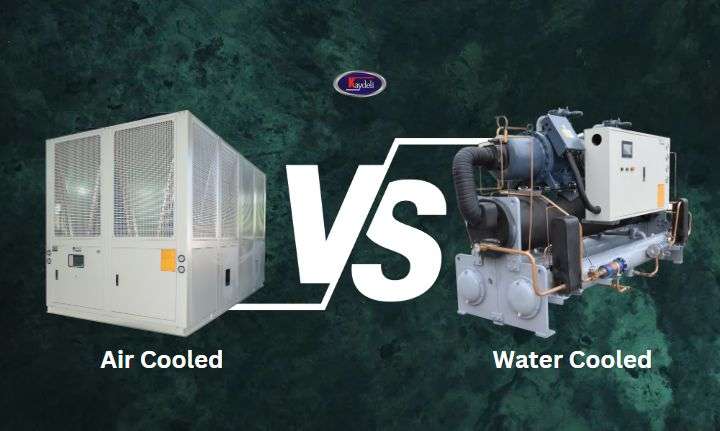
Operation and Components:
Air-cooled chillers are designed to dissipate heat to the atmosphere using air as the cooling medium. They use a fan to circulate air across the refrigerant coils and remove the heat from the building. On the other hand, water-cooled chillers use water as a cooling medium to transfer heat from the building to the chiller. Water-cooled chillers use a cooling tower (here is a video reference of a cooling tower) to dissipate heat into the atmosphere (Air cooled chiller doesn’t require any cooling tower)
Efficiency:
Water-cooled chillers are typically more efficient than air-cooled chillers. This is because water has a higher specific heat capacity than air, which means that it can absorb more heat per unit volume. Water-cooled chillers can also operate at lower temperatures, which improves the efficiency of the refrigeration cycle. There are also air-cooled chillers that can work under low temperatures but water-cooled chillers can go much lower. As a result, water-cooled chillers can provide a higher cooling capacity for a given size and consume less energy than air-cooled chillers.
Maintenance:
Air-cooled chillers require more maintenance than water-cooled chillers because they are exposed to more contaminants in the air. The fans and coils need to be cleaned regularly to maintain their efficiency (For Kaydeli air-cooled chillers we advise commissioning once every 3 or 6 months). On the other hand, water-cooled chillers require regular maintenance of the cooling tower to prevent scaling, corrosion, and microbiological growth.
Noise:
Air-cooled chillers are generally noisier than water-cooled chillers because of the fans used to circulate air. Water-cooled chillers, on the other hand, use water pumps and cooling towers, which are typically quieter.
Installation and Cost:
Air-cooled chillers are easier to install than water-cooled chillers because they do not require a separate cooling tower. However, air-cooled chillers are typically less efficient than water-cooled chillers and may require a larger modification to achieve the same cooling capacity. Water-cooled chillers are more expensive to install because they require a cooling tower, piping, and water treatment equipment. However, they may be more cost-effective in the long run because of their higher efficiency and lower energy consumption.
In summary, air-cooled chillers and water-cooled chillers both have their advantages and disadvantages. Air-cooled chillers are simpler to install, but they require more maintenance and are less efficient than water-cooled chillers. Water-cooled chillers are more expensive to install but provide higher efficiency and lower energy consumption which is better for the long run. The choice between the two will depend on the specific needs and requirements of the building and the HVAC system.
Kaydeli’s Chillers Power New Hydrogen Project
Kaydeli recently provided industrial chillers for a new hydrogen production project, which is part of a larger effort to promote sustainability and renewable energy.
Hydrogen is considered a clean energy source because it produces no emissions when burned and can be used in a variety of applications, including fuel cells, transportation, and power generation.
But the cost of hydrogen production remains high, especially the electrolytic hydrogen production process, so there are many alternative electrolytic hydrogen production processes in the industry, such as methanol reforming hydrogen production. Today we will discuss some details with these industry partners.

Kaydeli’s chillers are designed with energy efficiency in mind, which helps to reduce overall operating costs for the hydrogen production project. Shenzhen-based Kaydeli is sharing information about their industrial chillers, including real-world application cases and technical design knowledge. To learn more, you can check out the Kaydeli Chiller public account and receive a copy of their ‘100 Questions about Industrial Chillers’ guide. (Only the Chinese version is available for now)
The process
Kaydeli’s industrial chillers play a critical role in the hydrogen production process by helping to maintain the necessary temperature and pressure conditions. Firstly, the mixed gas of hydrogen and CO2 is produced by methanol steam reforming and pressure swing adsorption technology, and pure hydrogen and carbon dioxide are obtained through complex processes.
And then the methanol steam reforming process is roughly divided into raw material vaporization, catalytic conversion, reformed gas cooling and condensation, and washing and purification processes. To complete those, chillers and process cooling are required.
Methanol hydrogen production, isothermal reaction system tubular reactor, filled with heat carrier for heat exchange, to maintain a constant temperature reaction. The equipment involved is a heat exchanger, condenser, and supporting instruments and valves.
Read More
